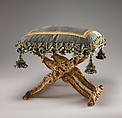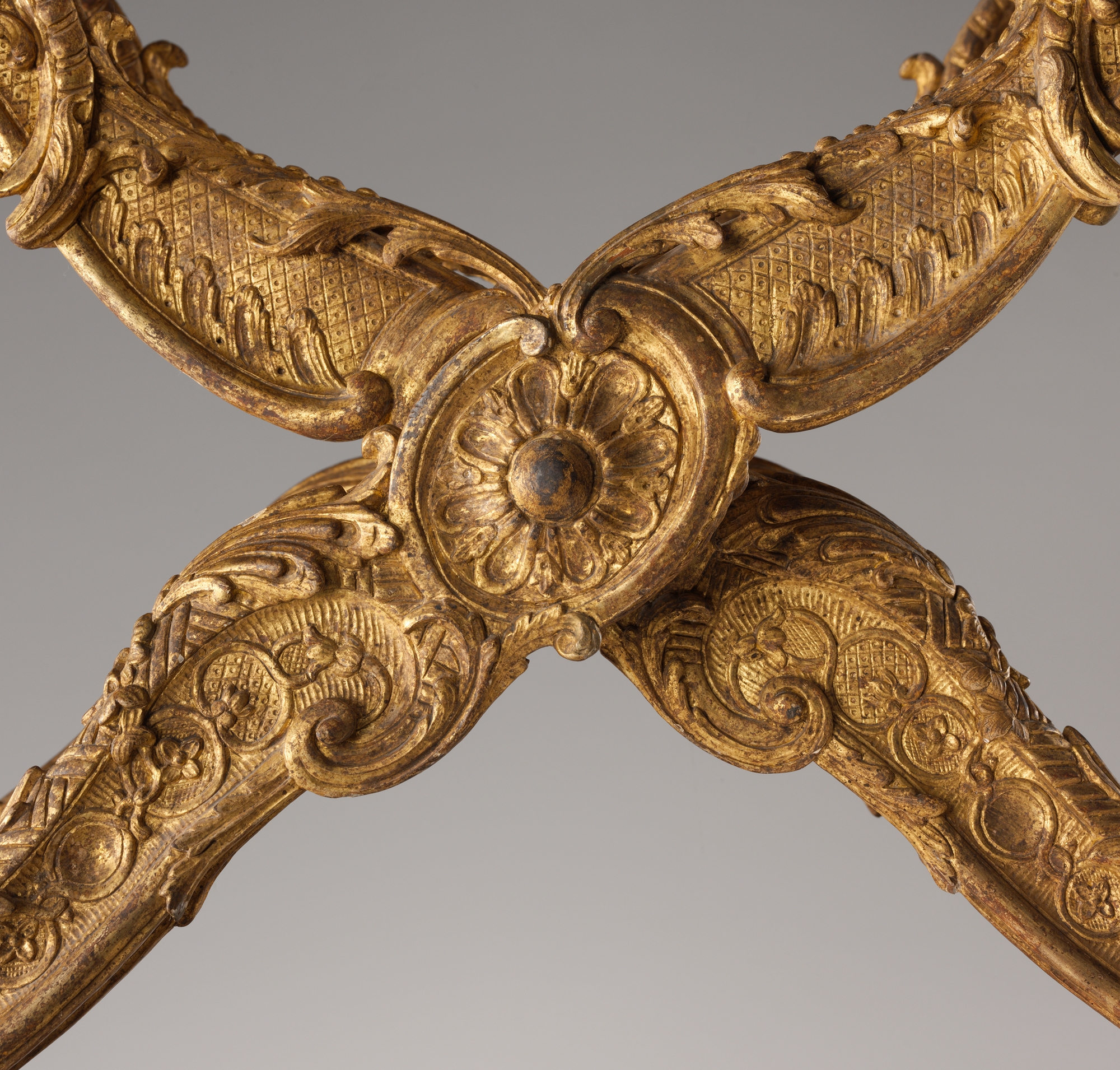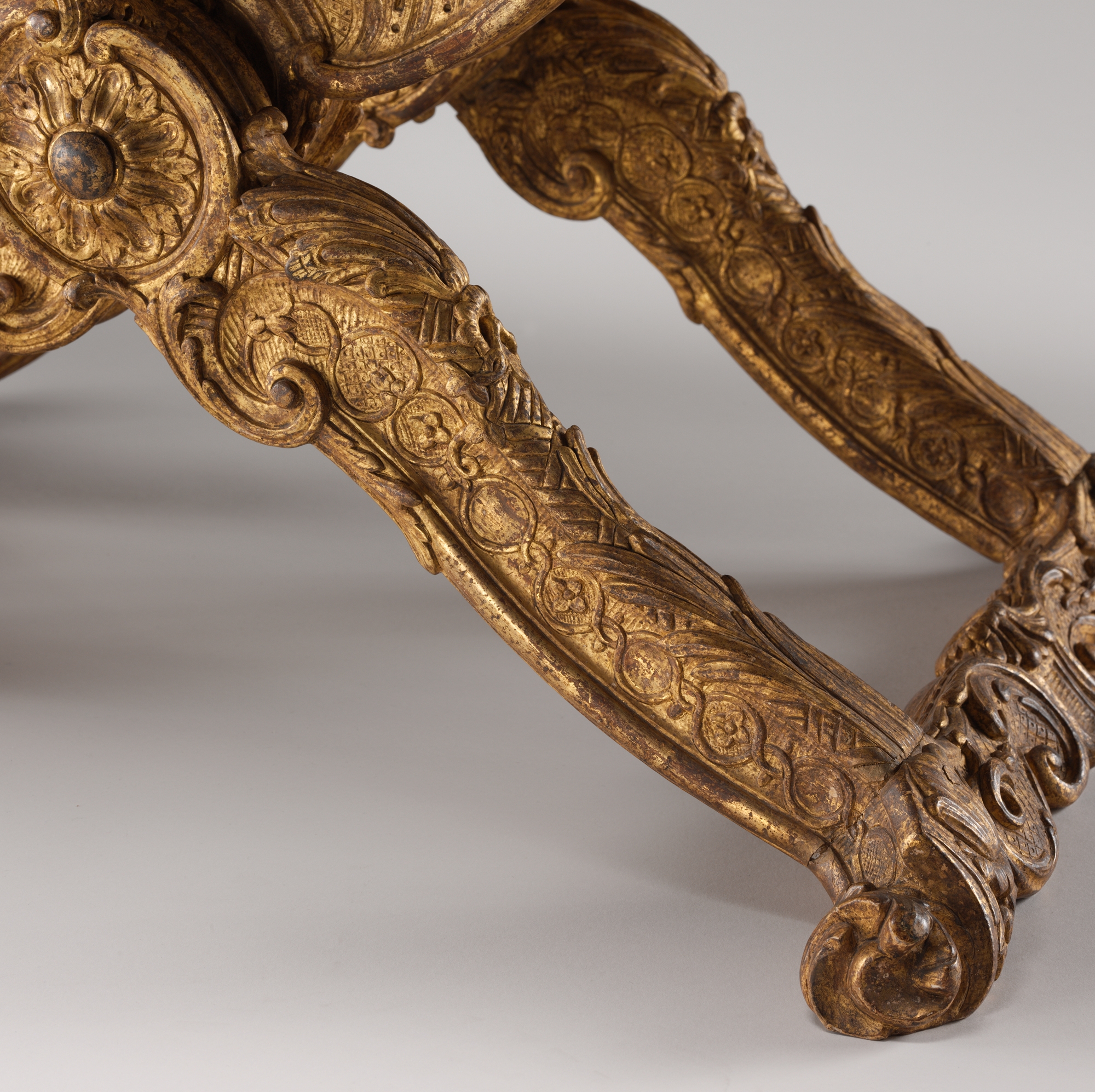Folding stool (pliant) (one of a pair)
Stools played an important role in the hierarchical seating arrangements of the French court, which followed a strict and complex protocol. Depending on the rank of the company–which would include members of the royal family, courtiers, and dignitaries–one remained standing or was assigned a floor cushion (carreau), stool, or, rarely, a side chair. Armchairs were reserved for the king and the queen. Large numbers of stools were listed in the royal inventories; one type, called pliant, which includes the present pair, had an X-shaped frame that could conveniently be folded.
The inventory mark of the palace of Versailles, an interlaced double V and a closed crown, is stamped underneath the lower struts of the Museum’s stools. Even though the authenticity of these marks has been questioned, the excellent quality of the work, expressed not only in the carving but also in the recutting (reparure) of the gesso, leaves no doubt that this pair belonged to an important set of seat furniture.
Consisting of calcium carbonate mixed with rabbit glue, gesso or whiting forms the base coat for the gilding. After it has been applied to a carved frame and has dried, this layer needs to be recut to restore detail or definition to the decoration. Motifs or ground patterns too delicate to be cut into the wood itself, such as the diaper design on the Museum’s stools, were also added during the reparure. Despite the fact that the appearance of these low seats depended largely on the richness of the upholstery and trimmings of their cushions, the frames of the stools were elaborately carved with Rococo ornament. The shaped outline of the supports is enlivened with bulrushes, basketweave motifs, and partly openworked acanthus leaves. Large rosettes cover the bolts that allow the stools to fold.
Due to rights restrictions, this image cannot be enlarged, viewed at full screen, or downloaded.
This artwork is meant to be viewed from right to left. Scroll left to view more.






